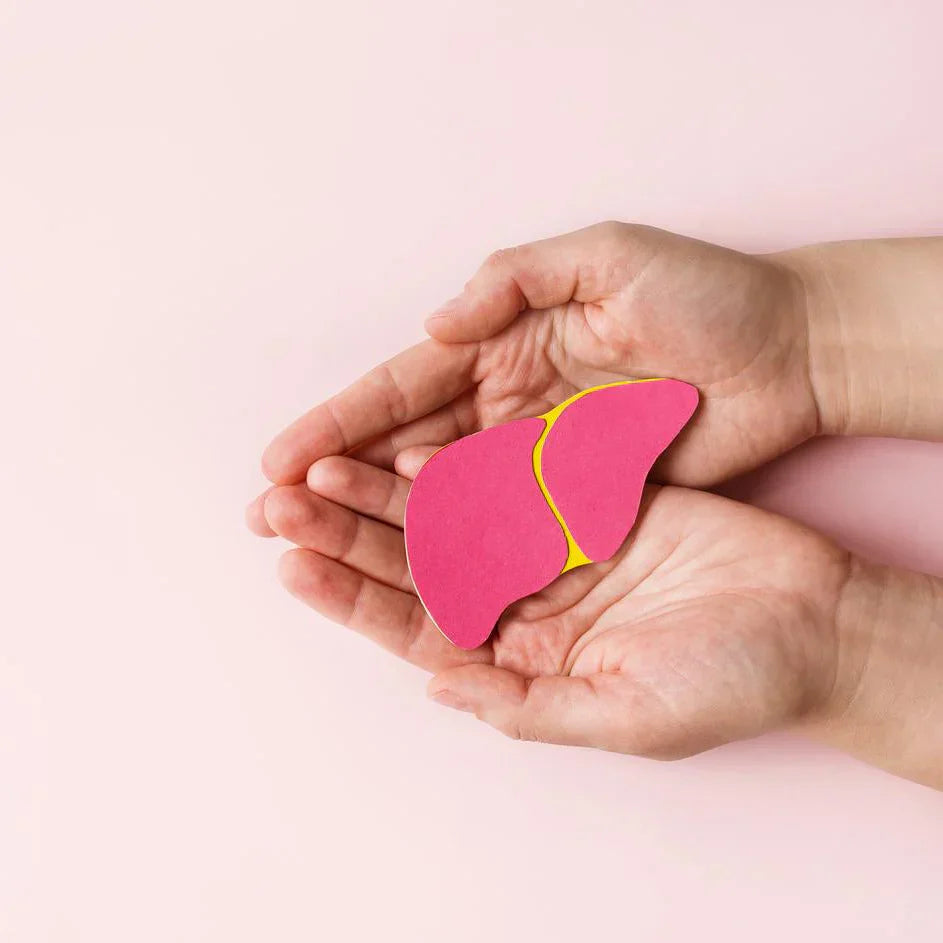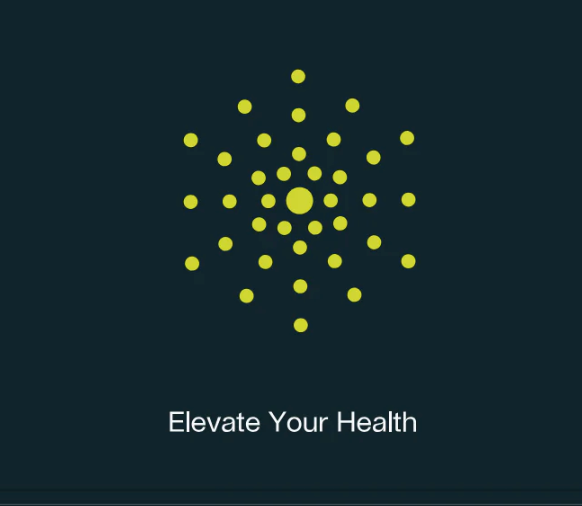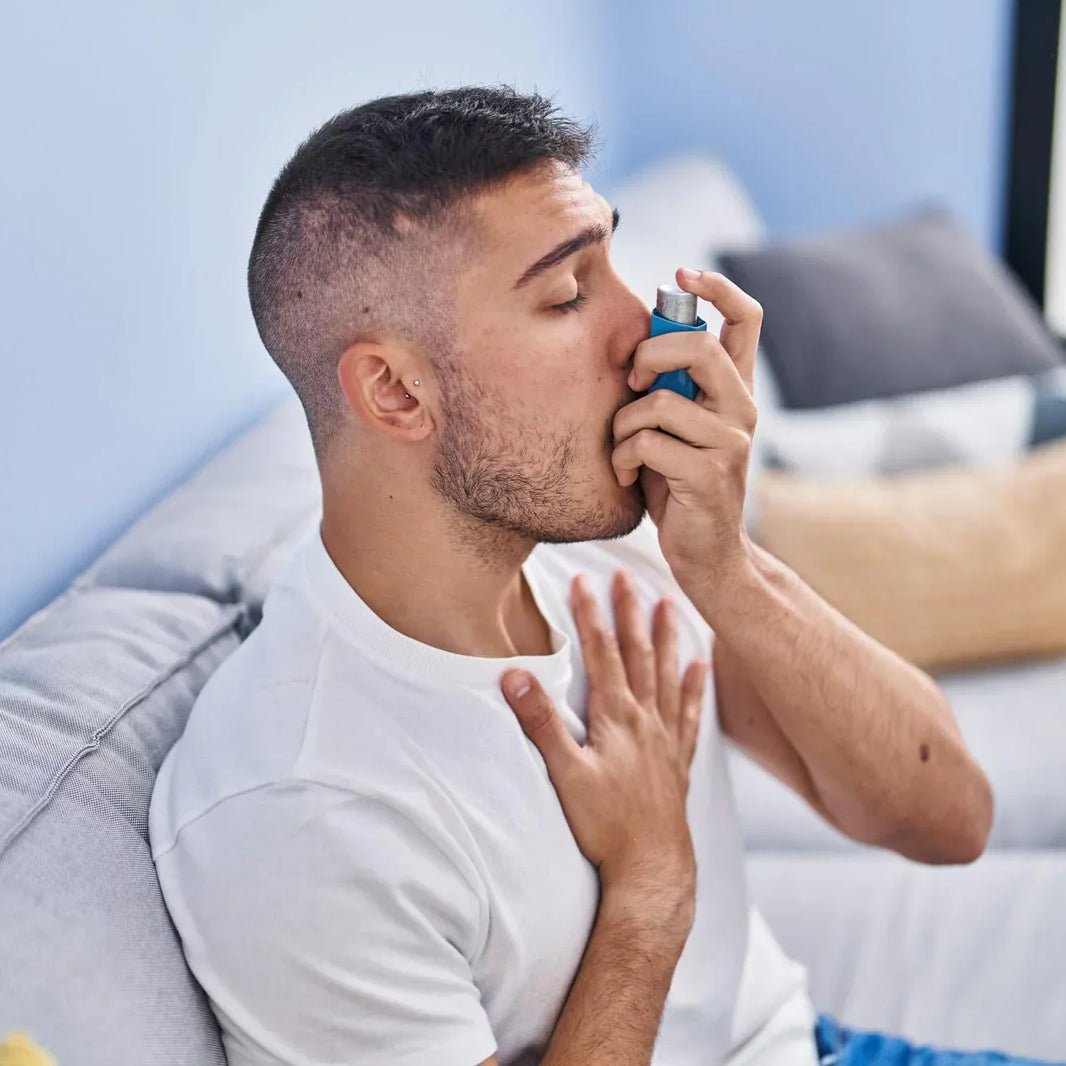Liver health remains a critical aspect of overall wellness, with the liver performing essential functions including detoxification, metabolism, and synthesis of vital proteins. The increasing prevalence of liver conditions such as non-alcoholic fatty liver disease (NAFLD) has prompted growing interest in interventions that support healthy liver function. This report examines the concept of healthy liver support, exploring the underlying mechanisms, pathways, and targets through which various interventions operate, while critically evaluating the evidence supporting different approaches.
Understanding Liver Health and Support
Healthy liver support encompasses a range of interventions designed to maintain or enhance the liver's natural functions, support its regenerative capabilities, and prevent liver damage. These interventions may include nutritional supplements, dietary modifications, phytochemicals, and lifestyle changes aimed at optimizing the liver's detoxification processes, reducing inflammation, and supporting cellular health. The liver, being the body's primary detoxification organ, contains sophisticated enzymatic systems that neutralize and eliminate potentially harmful compounds from the bloodstream. Supporting these intrinsic mechanisms forms the foundation of most liver health approaches.
The concept of liver support has evolved from traditional herbal remedies to evidence-based interventions targeting specific cellular and molecular pathways. Modern approaches to liver support often focus on enhancing Phase II detoxification enzymes, improving antioxidant capacity, reducing inflammation, modulating the gut-liver axis, and supporting metabolic homeostasis. Adequate antioxidant supply is essential for maintaining metabolic balance and reducing oxidative stress during detoxification processes1. This multipronged approach reflects our growing understanding of the liver's complex physiology and the multifactorial nature of liver diseases.
Liver Detoxification Processes
The liver's detoxification system operates through a series of enzymatic reactions, traditionally categorized into Phase I and Phase II pathways. Phase I primarily involves cytochrome P450 enzymes that transform toxins through oxidation, reduction, or hydrolysis, while Phase II processes involve conjugation reactions that make toxins more water-soluble for excretion. Research indicates that certain phytochemicals can stimulate the production of detoxification enzymes or act as antioxidants that neutralize free radicals generated during detoxification1. Guided metabolic detoxification programs have shown potential in supporting these processes, with one study demonstrating a 13% increase in glutathione S-transferase activity and a 23% increase in superoxide dismutase activity following a 28-day program1.
The liver's antioxidant defense system plays a crucial role in maintaining cellular integrity during detoxification. Glutathione, a tripeptide antioxidant, serves as a primary defense against oxidative stress, while enzymes such as superoxide dismutase and glutathione peroxidase neutralize reactive oxygen species. Studies have shown that supporting these antioxidant systems through nutritional interventions can enhance total cellular antioxidant capacity, potentially protecting against oxidative damage associated with liver disease16.
Mechanisms and Pathways of Liver Support
Antioxidant Mechanisms
Oxidative stress plays a significant role in the pathogenesis of various liver diseases, making antioxidant support a critical aspect of liver health. Multiple studies have demonstrated that enhancing antioxidant capacity can help protect liver cells from damage and support overall liver function. For instance, a novel dietary supplement containing phytochemicals from sage, oolong tea, and guarana extracts, combined with thiamine and niacin, was found to significantly increase total glutathione concentrations, glutathione peroxidase, and superoxide dismutase activities in liver tissue6. These antioxidant enzymes help neutralize free radicals and reduce oxidative stress, which may otherwise lead to liver cell damage and dysfunction.
Green tea and its primary catechin, epigallocatechin gallate (EGCG), represent another significant source of antioxidant support for the liver. Accumulating evidence suggests that green tea consumption may help prevent and manage NAFLD by alleviating oxidative stress and related metabolic disturbances4. EGCG appears to exert its protective effects by modulating multiple signaling pathways and enhancing the body's antioxidant defense systems, ultimately helping maintain redox homeostasis in the liver.
Inflammatory Regulation
Chronic inflammation represents a key driver of liver disease progression, particularly in conditions such as NAFLD and non-alcoholic steatohepatitis (NASH). Several liver support interventions target inflammatory pathways to mitigate liver damage. Silybin, a component extracted from milk thistle, has demonstrated anti-inflammatory properties in animal studies. Research in Peking ducks showed that dietary supplementation with silybin significantly decreased serum levels of pro-inflammatory cytokines TNF-α and IL-6, suggesting potential benefits for reducing hepatic inflammation3.
The regulation of immune cell activity also plays a crucial role in preventing liver damage. Research on chronic hepatitis B (CHB) has identified a distinct liver-resident CD8+ T cell population that contributes to liver pathogenesis through non-specific, Fas ligand-mediated killing of hepatocytes18. This suggests that interventions targeting specific immune cell populations or their activation pathways might help protect the liver from inflammatory damage in various conditions.
Metabolic Regulation and Liver Health
The liver serves as a central metabolic hub, regulating glucose homeostasis, lipid metabolism, and protein synthesis. Metabolic dysregulation, particularly in lipid metabolism, underlies the development of NAFLD, which has become the leading cause of hepatic fibrosis worldwide14. Effective liver support approaches often target these metabolic pathways to prevent fat accumulation and associated liver damage.
Current therapeutic strategies for NAFLD-associated fibrosis focus on addressing the underlying metabolic disturbances. While some compounds aim to revert pathogenic liver metabolism, alternative approaches seek to disconnect the metabolic injury from resulting inflammation and fibrosis14. Investigational drugs typically target insulin resistance, hepatocyte death mechanisms, inflammatory cascades, and fibrogenic pathways. However, the foundation of prevention and treatment remains lifestyle modifications, including weight loss, regular exercise, and a healthy diet14.
Gut-Liver Axis and Microbiome Influence
Emerging research highlights the critical role of the gut-liver axis in maintaining liver health. The gut microbiome exerts significant influence on liver disease susceptibility and progression through multiple mechanisms. Alterations in gut microbial diversity and composition directly impact inflammatory liver conditions such as NASH16. One proposed mechanism suggests that an overabundance of alcohol-fermentation pathways in the gut microbiome may outcompete healthier, acid-producing microbiota members, potentially creating a self-sustaining cycle that promotes liver disease progression16.
Probiotic interventions represent a promising approach for supporting liver health through the gut-liver axis. Research using Caenorhabditis elegans as a model organism demonstrated that Lactobacillus plantarum JBC5 improved longevity and healthy aging by modulating antioxidative pathways, innate immunity, and serotonin signaling7. The probiotic upregulated intestinal tight junction protein ZOO-1, improving gut integrity, which might help reduce bacterial translocation and endotoxemia implicated in liver disease progression7. These findings suggest that targeting the gut microbiome could offer indirect but significant benefits for liver health.
Evidence-Based Approaches to Liver Support
Proven Interventions
Lifestyle modifications represent the most well-established approach to supporting liver health, particularly for preventing and treating NAFLD. Weight loss, regular physical activity, and a balanced diet have consistently demonstrated benefits for liver health outcomes14. These lifestyle interventions address the underlying metabolic disturbances that contribute to liver disease, making them foundational to any liver support regimen.
Certain phytochemicals have also shown promising results in clinical and preclinical studies. Silybin, derived from milk thistle, has demonstrated hepatoprotective effects in multiple studies3. In Peking ducks, silybin supplementation improved liver function, as evidenced by decreased glutamine transaminase levels and increased superoxide dismutase activity3. Similarly, green tea and EGCG have shown beneficial effects in preventing and managing NAFLD through their antioxidant properties4.
Nutritional support may provide benefits for specific liver conditions, according to meta-analyses of randomized trials. The provision of enteral nutrition appears to reduce infection rates in patients undergoing liver transplantation and total complication rates after hepatic resections8. Nutritional supplements have shown potential to improve mortality in patients with hepatocellular carcinoma or transplanted livers and may reduce ascites rates in cirrhosis patients8. However, these findings must be interpreted with caution due to potential biases and limitations in study designs.
Less Proven or Unproven Approaches
Despite widespread marketing, many commercial liver support products lack robust clinical evidence. A guided 28-day metabolic detoxification program showed some promising effects on antioxidant enzymes but did not significantly impact all measured biomarkers of liver function1. This suggests that while such programs may have some biological effects, their overall clinical benefit remains uncertain.
Certain botanical remedies for liver support require further validation. A Peruvian botanical treatment containing extracts of Curcuma longa, Cordia lutea, and Annona muricata showed no evidence of toxicity in preclinical studies, but its efficacy for liver support needs additional clinical investigation15. This highlights the need for rigorous clinical trials before recommending such products.
Iron supplementation presents a particular concern for liver health. While altitude exposure increases the body's iron requirements, self-prescribed iron supplementation is discouraged due to potential risks9. Excess iron accumulation in vital organs, including the liver, is associated with an increased risk of several conditions including liver disease. This underscores the importance of medical supervision for any supplementation regimen targeting liver health.
Nutritional Components for Liver Support
Antioxidants and Phytochemicals
The role of antioxidants and phytochemicals in supporting liver health has been extensively studied. Green tea polyphenols, particularly EGCG, have demonstrated multiple beneficial effects on liver health through their antioxidant properties4. These compounds help maintain redox homeostasis in the liver, potentially protecting against oxidative damage associated with various liver diseases.
Multi-phytochemical supplements combining several plant extracts have shown promising results in enhancing liver antioxidant capacity. A dietary supplement containing sage, oolong tea, and guarana extracts, along with thiamine and niacin, significantly increased hepatic antioxidant enzyme activities without causing adverse effects on serum chemistry or genomic integrity6. This suggests that combination approaches targeting multiple antioxidant pathways may provide comprehensive liver support.
Essential Nutrients and Vitamins
Specific nutrients play critical roles in liver health and function. Choline, zinc, and vitamin B12 have garnered particular attention for their potential liver-supporting properties. A study examining the effects of cooked beef liver, rich in these nutrients, on reaction time in college students revealed significant changes in blood plasma levels of these compounds after 30 days of supplementation19. While this study focused on neurological outcomes rather than liver health directly, it highlights the bioavailability of these nutrients from food sources.
B vitamins, particularly thiamine, are critical for proper liver function. In patients requiring parenteral nutrition, deficiencies in trace elements and vitamins can occur despite calculated adequate nutritional support, indicating that nutritional demands may be underestimated in certain clinical scenarios13. This underscores the importance of comprehensive nutritional assessment and support in patients with liver disease.
Future Directions in Liver Support
Emerging Research and Novel Targets
Recent advances in understanding liver physiology have identified novel targets for liver support interventions. The KIF18A/TTC3/Akt/mTOR pathway has emerged as a potential target for alleviating liver fibrosis by inactivating hepatic stellate cells10. Similarly, research on hepatic progenitor cells has identified the MAPK/ERK and Wnt/β-Catenin pathways as critical for liver regeneration, suggesting new avenues for supporting liver repair and regeneration2.
The role of circadian rhythms in liver health represents another emerging area of research. Studies in a transgenic mouse model of hepatocellular carcinoma found time-of-day dependent changes in proliferation, DNA damage, and clock gene expression in both cancerous and healthy liver tissue17. This suggests that chronotherapy approaches, which consider timing of treatment, may enhance the efficacy of liver support interventions.
Personalized Approaches to Liver Support
Recent multi-omics research has revealed shared pathophysiological mechanisms between COVID-19 and NAFLD, highlighting the complex interplay between different biological systems in liver disease20. This research identified enrichment of complement-related pathways in Kupffer cells, syndecan-mediated signaling in plasma cells, and epithelial-to-mesenchymal transition in hepatic stellate cells, suggesting multiple potential targets for personalized interventions.
The integration of genomic, metabolomic, and microbiome data is enabling more personalized approaches to liver support. By identifying individual risk factors and metabolic profiles, clinicians may eventually be able to tailor liver support strategies to each patient's specific needs, potentially improving outcomes across various liver conditions20.
Conclusion
Healthy liver support encompasses a range of approaches targeting multiple physiological pathways and mechanisms. The strongest evidence supports lifestyle modifications, including weight loss, regular physical activity, and a balanced diet, particularly for preventing and managing NAFLD. Certain phytochemicals, such as silymarin and green tea catechins, have demonstrated promising effects through antioxidant and anti-inflammatory mechanisms, while probiotics show potential for supporting liver health through the gut-liver axis.
However, many commercial liver support products and detoxification programs lack robust clinical evidence, highlighting the need for cautious evaluation of marketing claims. As research advances our understanding of liver physiology and pathology, new targets and personalized approaches are emerging that may eventually transform our approach to liver support. Until then, a focus on evidence-based interventions, particularly lifestyle modifications, remains the cornerstone of maintaining and enhancing liver health.
Future research should prioritize well-designed clinical trials of promising liver support interventions, with clear outcome measures and appropriate control groups. Additionally, greater attention to personalized approaches based on individual risk factors, metabolic profiles, and genetic predispositions may help optimize liver support strategies for diverse populations. By integrating emerging scientific knowledge with rigorous clinical evaluation, we can develop more effective approaches to supporting this vital organ throughout the lifespan.
Citations:
- https://www.ncbi.nlm.nih.gov/pmc/articles/PMC10181083/
- https://www.semanticscholar.org/paper/2a7cdad23b6c8098140607b24e19b0f216c264d2
- https://www.ncbi.nlm.nih.gov/pmc/articles/PMC10795170/
- https://www.ncbi.nlm.nih.gov/pmc/articles/PMC8301033/
- https://www.semanticscholar.org/paper/d7118c6d1bb0ce39216fb62155dd666bd3df52be
- https://pubmed.ncbi.nlm.nih.gov/20716937/
- https://www.ncbi.nlm.nih.gov/pmc/articles/PMC8868178/
- https://pubmed.ncbi.nlm.nih.gov/36821460/
- https://pubmed.ncbi.nlm.nih.gov/26957944/
- https://www.ncbi.nlm.nih.gov/pmc/articles/PMC10876760/
- https://www.semanticscholar.org/paper/b5da75dc16fb8b01c4bf16c7e6ac39906452e312
- https://pubmed.ncbi.nlm.nih.gov/28435513/
- https://pubmed.ncbi.nlm.nih.gov/1775935/
- https://www.ncbi.nlm.nih.gov/pmc/articles/PMC8106094/
- https://pubmed.ncbi.nlm.nih.gov/27101557/
- https://www.ncbi.nlm.nih.gov/pmc/articles/PMC7291163/
- https://pubmed.ncbi.nlm.nih.gov/32700769/
- https://www.ncbi.nlm.nih.gov/pmc/articles/PMC9797343/
- https://www.semanticscholar.org/paper/042ce1abdb4e4b8aa9a027d6bdbdba00b7b48ddc
- https://pubmed.ncbi.nlm.nih.gov/36593576/
- https://pubmed.ncbi.nlm.nih.gov/9422492/
- https://pubmed.ncbi.nlm.nih.gov/31996958/
- https://www.ncbi.nlm.nih.gov/pmc/articles/PMC11669079/
- https://pubmed.ncbi.nlm.nih.gov/34079104/
- https://www.semanticscholar.org/paper/e995defa560634f706ea67b75d04e9c805872863
- https://www.semanticscholar.org/paper/ba59298f2392fc5a5d2a88379673ce9e5b25dcde
- https://www.semanticscholar.org/paper/d4fe0753edc225d2a98e28a50b5a37502713863b
- https://www.ncbi.nlm.nih.gov/pmc/articles/PMC6390935/
- https://www.ncbi.nlm.nih.gov/pmc/articles/PMC11802444/
- https://www.ncbi.nlm.nih.gov/pmc/articles/PMC11815617/
- https://www.semanticscholar.org/paper/54a2377082ba093310981946c67951d030725be5
- https://www.ncbi.nlm.nih.gov/pmc/articles/PMC7384100/
- https://www.ncbi.nlm.nih.gov/pmc/articles/PMC10097968/
- https://www.ncbi.nlm.nih.gov/pmc/articles/PMC9655067/
- https://www.ncbi.nlm.nih.gov/pmc/articles/PMC9145013/
- https://www.ncbi.nlm.nih.gov/pmc/articles/PMC6769991/
- https://www.semanticscholar.org/paper/300d4345a4bc6490468dc81fbeac01bd5f60fcf0
- https://www.ncbi.nlm.nih.gov/pmc/articles/PMC7108859/
- https://www.ncbi.nlm.nih.gov/pmc/articles/PMC8816580/
- https://www.ncbi.nlm.nih.gov/pmc/articles/PMC6410653/
- https://pubmed.ncbi.nlm.nih.gov/39679853/
- https://pubmed.ncbi.nlm.nih.gov/34933999/
- https://pubmed.ncbi.nlm.nih.gov/34872286/
- https://www.semanticscholar.org/paper/48a6cde42171575f3eab5b463ed4a2383f170825
- https://www.semanticscholar.org/paper/1feadbf40f5b826918d0458a362cf852c3b69f92
- https://www.semanticscholar.org/paper/4cae8a0c63ce0b26c7b4e50b960d18515799f895
- https://www.semanticscholar.org/paper/5b7dcd100b61ddc753804b37a9690e58e72bfc3e
- https://www.ncbi.nlm.nih.gov/pmc/articles/PMC11815598/








